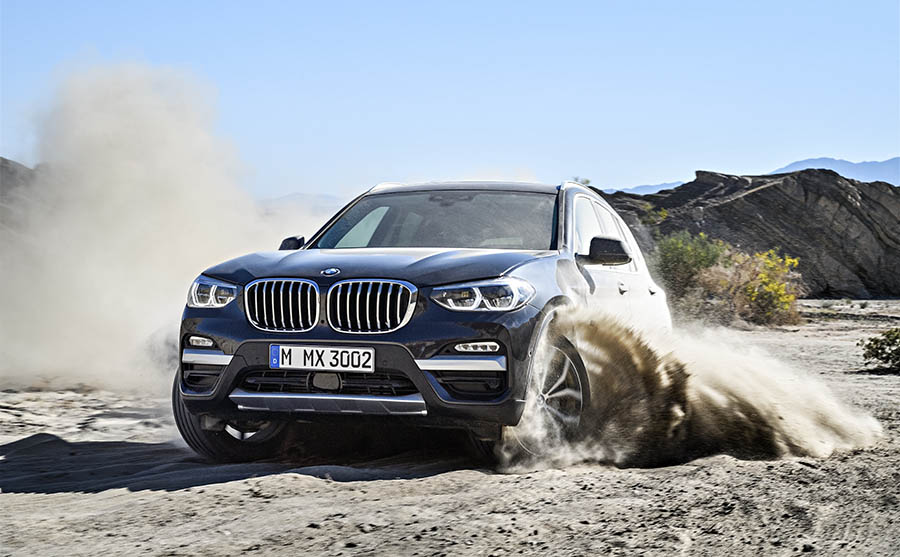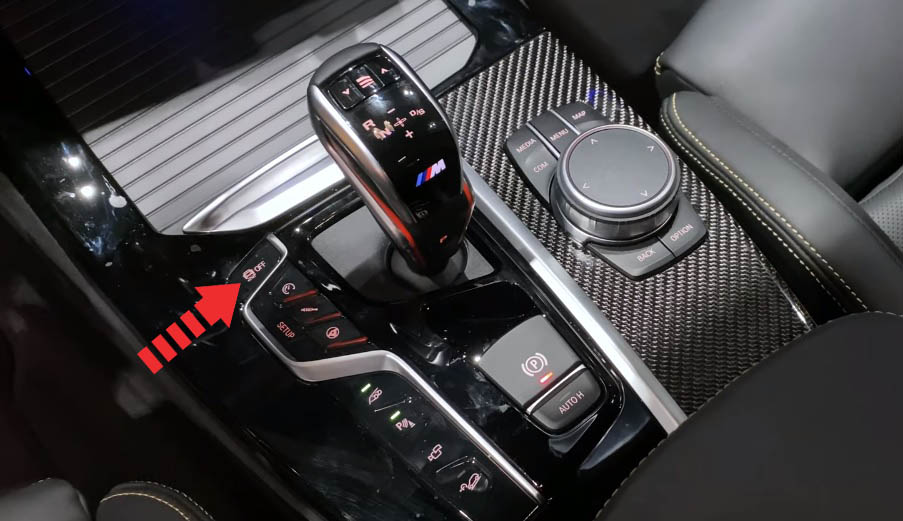Every BMW is equipped with Dynamic Stability Control, a system that automatically intervenes in oversteer and understeer situations to help stabilize the car and get it back on the drivers intended path.

A warning light which indicates that DSC is not fully active will display in the instrument cluster under two conditions.
First DSC Off light will illuminate if you activate Dynamic Traction Control by pressing Sport button twice or by placing your vehicle in Sport Plus mode using Driving Dynamics Control. When Dynamic Traction Control is selected, its status will also display in the instrument cluster. Dynamic traction control provides a little better grip in slippery conditions by allowing for a little more wheel spin before the DSC system intervenes.
Turning off Stability Control
If you want to completely turn off the Dynamic Stability Control system, press and hold DSC OFF button on the center console for a few seconds. The phrase DSC OFF will display in the instrument cluster as well.

In either case, full DSC can be reengaged by simply pressing DSC OFF button.
What is Dynamic Stability Control?
The DSC is a term used by BMW and other manufacturers for the electronic stability program (ESP). The range of functions is therefore similar, but can differ in some points, which is due to the fact that every manufacturer can individually integrate the stability program into their vehicles. The DSC, or Dynamic Stability Control, has a connection to each wheel. Via sensors that monitor many parameters that are relevant for driving stability, the system receives precise data on the current condition of the vehicle several hundred times per second and compares this with a standard model. If there are serious deviations, the DSC intervenes.
DSC effectively stabilizes driving behavior
The DSC can effectively prevent the car from oversteering or understeering by simply providing the unstable wheel with individual braking force. Often this also involves throttling the engine power in order to prevent excessive forward thrust.
Some manufacturers are also increasingly allowing several security components to communicate with one another in order to achieve greater security. The various components react to one another, analyze the actions of the other systems and adapt. In this way, the DSC can fully exploit its full potential and does not work against other systems.
The DSC is not only responsible for the wheels and their stability for the driving behavior, it also regulates the traction, i.e. it has a supportive effect when starting and accelerating, to prevent the drive wheels from spinning. In addition to BMW, Mazda and Ford also use the term DSC for their respective stability programs. Almost every manufacturer now has such a program as an equipment component. An important contribution to road safety.









